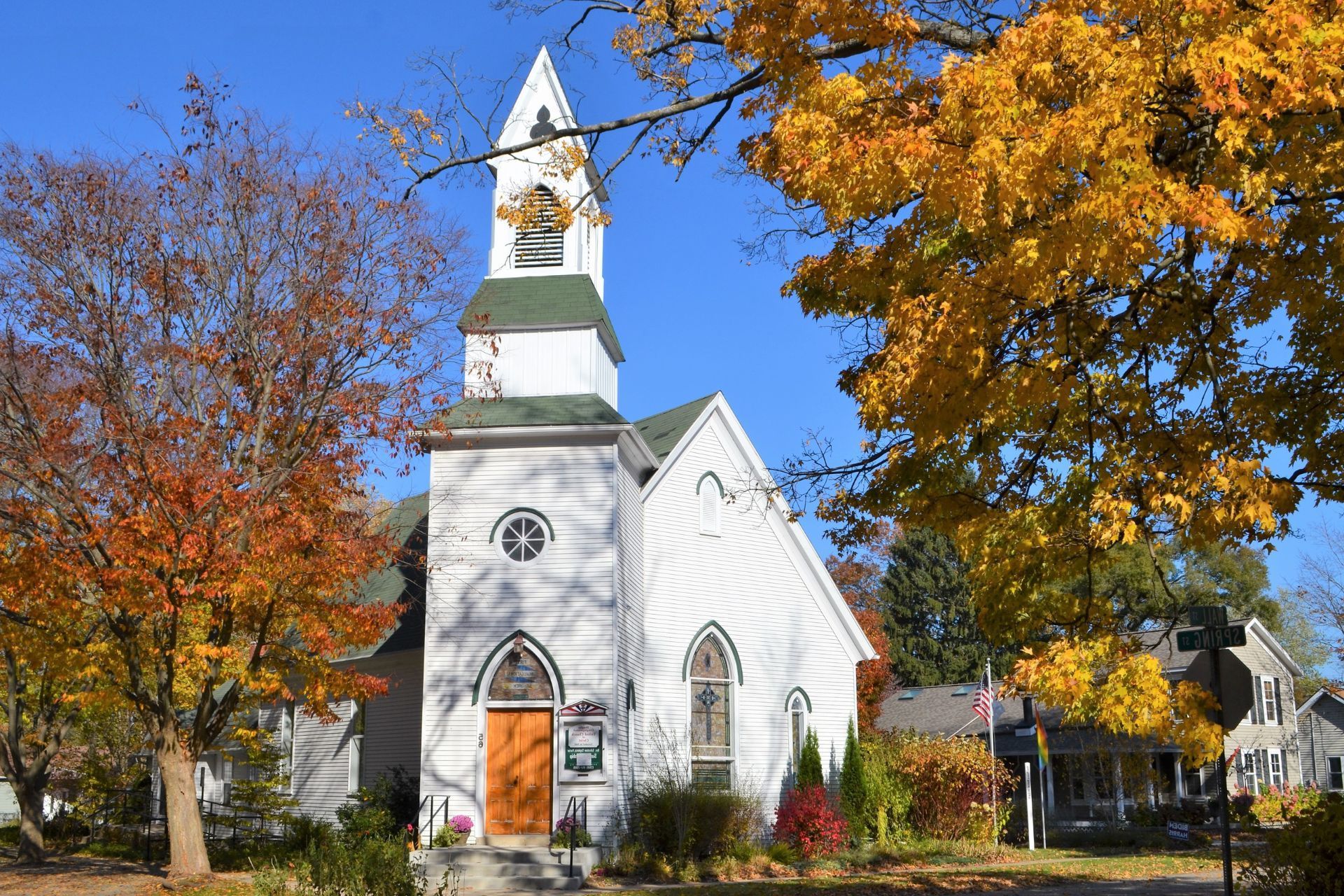
Index
The Economic and Social Impact of Michigan’s Nonprofit Sector
Current Challenges Facing Church Insurance in Michigan
Rising Risks and Insurance Claims in the Nonprofit Sector
Market Trends and Innovations in Nonprofit Insurance
Practical Tips for Churches and Nonprofits Seeking Insurance
Looking Ahead: The Future of Church and Nonprofit Insurance in Michigan
In Michigan, the insurance landscape for churches and nonprofit organizations is evolving rapidly, shaped by economic shifts, regulatory changes, and emerging risks. With over 42,000 nonprofit entities and a thriving charitable sector contributing billions to the state economy, understanding the nuances of insurance coverage is crucial for these organizations to protect their missions and assets. This comprehensive guide explores the current state of church and nonprofit insurance in Michigan, highlighting key challenges, market trends, and essential considerations for securing the right policies.
The Economic and Social Impact of Michigan’s Nonprofit Sector
Michigan’s nonprofit sector is a cornerstone of the state’s economy and community well-being. According to Independent Sector, the state is home to 42,886 nonprofit organizations, including 28,270 public charities and 2,556 foundations. These organizations employ over 397,000 people and generate more than $81 billion in annual revenues, underscoring their significant role in Michigan’s social fabric.
Moreover, the insurance industry itself is a major economic driver in Michigan. In 2018, the sector directly employed more than 80,000 individuals and contributed over $38 billion to the state economy, according to Crain's Grand Rapids Business. This interconnection between nonprofits and insurance providers highlights the importance of a stable insurance market to support the state’s charitable and religious organizations.
In addition to their economic contributions, Michigan's nonprofits play a vital role in addressing social issues and enhancing community engagement. They tackle a wide range of challenges, from poverty alleviation and education to healthcare access and environmental conservation. For instance, organizations like the Michigan Nonprofit Association work tirelessly to strengthen the capacity of nonprofits, providing them with the resources and training needed to effectively serve their communities. This commitment to social betterment not only improves the quality of life for residents but also fosters a sense of civic responsibility and volunteerism across the state.
Furthermore, the impact of Michigan's nonprofit sector extends beyond immediate community benefits; it also influences the state's overall quality of life and attractiveness to new residents and businesses. By promoting cultural initiatives, supporting the arts, and enhancing public spaces, nonprofits contribute to a vibrant community atmosphere that can draw in tourism and investment. Events organized by these organizations, such as local festivals, educational workshops, and fundraising galas, not only provide entertainment and enrichment but also create networking opportunities that can lead to further economic development. As such, the nonprofit sector is not just a safety net for those in need; it is a dynamic force that propels Michigan toward a more prosperous and inclusive future.
Current Challenges Facing Church Insurance in Michigan
Churches in Michigan are currently navigating a particularly turbulent insurance market. Several major insurers have either downgraded their ratings or exited certain markets, creating uncertainty and increasing costs for faith-based organizations. For example, Insurance Business America reports that Church Mutual, a key insurer for many churches, has been downgraded, while State Farm has withdrawn from some areas altogether.
These developments have led to a more constrained market, with fewer options and rising premiums. One expert noted, “We are certainly in a concerning time right now, with Brotherhood being downgraded, State Farm having left some of the areas and also having their issues, and then we’re looking at Church Mutual and holding our breath, hoping that they’re able to maintain their AM best rating.” This sentiment reflects the anxiety many church leaders feel as they seek affordable and reliable coverage.
Adding to the complexity, many churches operate as unregulated businesses, which makes underwriting difficult. As highlighted by a Michigan community expert, “Unregulated businesses are difficult to underwrite,” emphasizing the challenges insurers face in assessing risks for these organizations. The unique nature of churches, which often host a variety of events and activities, further complicates risk assessment. From community outreach programs to youth activities, the diverse functions of a church can lead to a wide range of potential liabilities that insurers must consider.
Moreover, the impact of natural disasters and climate change cannot be overlooked. Michigan has experienced its share of extreme weather events, from heavy snowfalls to severe thunderstorms, which can lead to property damage and increased claims. Insurers are becoming more cautious in their risk evaluations, leading to higher premiums and stricter coverage terms. Churches, often seen as community pillars, may find it increasingly challenging to secure the necessary coverage to protect their properties and congregations. This evolving landscape necessitates that church leaders not only stay informed about the insurance market but also actively engage in risk management strategies to mitigate potential losses.

Rising Risks and Insurance Claims in the Nonprofit Sector
The nonprofit insurance market is grappling with a rise in complex claims, particularly related to employment practices and abuse allegations. A 2023 study revealed an increase in claims involving molestation, wrongful termination, and employment practices liability, which has put additional pressure on insurers and nonprofit organizations alike. These claims contribute to rising insurance costs and make it harder for nonprofits to secure comprehensive coverage.
Such legal complexities are especially challenging for churches and other nonprofits that often operate with limited resources and rely heavily on volunteer staff. The increased scrutiny and risk exposure mean that organizations must be diligent in their risk management practices and insurance selections to avoid coverage gaps.
Moreover, the evolving landscape of social media and digital communication has added another layer of complexity to the risk environment. Nonprofits are now more vulnerable to reputational damage from online allegations, which can escalate quickly and lead to significant legal repercussions. For instance, a single negative post can spark a public relations crisis, prompting organizations to invest in crisis management strategies and legal counsel to navigate potential fallout. This shift underscores the necessity for nonprofits to not only focus on traditional insurance coverage but also to adopt proactive measures in their public relations and digital engagement strategies.
Additionally, the growing emphasis on transparency and accountability in the nonprofit sector has led to increased regulatory scrutiny. Organizations are now facing more stringent requirements to demonstrate compliance with employment laws and ethical guidelines. This heightened oversight means that nonprofits must not only be aware of their internal policies but also ensure that their practices align with industry standards. Failure to do so can result in costly legal battles and further strain limited financial resources, making it imperative for nonprofits to stay informed about changes in legislation and best practices in governance.
Market Trends and Innovations in Nonprofit Insurance
Despite these challenges, the nonprofit insurance market is showing signs of growth and adaptation. According to a report by Lucintel, technological innovation and evolving regulatory environments are driving changes in how insurance products are designed and delivered to the nonprofit sector.
Insurers are increasingly leveraging technology to streamline underwriting processes, improve risk assessment, and offer more tailored coverage options. This is especially important for nonprofits, which often have unique risk profiles compared to traditional businesses. Additionally, regulatory changes are prompting insurers to develop new policies that better address the specific needs and exposures of charitable organizations.
These market dynamics suggest a future where nonprofits in Michigan may benefit from more customized insurance solutions, although the current environment remains challenging.
Moreover, the rise of data analytics has enabled insurers to gain deeper insights into the operational risks faced by nonprofits. By analyzing historical claims data and current operational practices, insurers can create more accurate risk models that reflect the realities of nonprofit work. This not only helps in pricing policies more effectively but also allows nonprofits to implement risk management strategies that can mitigate potential losses. As a result, organizations can focus more on their mission-driven activities rather than being bogged down by insurance concerns.
Furthermore, the integration of digital platforms is revolutionizing the way nonprofits interact with their insurers. Online portals and mobile applications are becoming commonplace, allowing organizations to manage their policies, submit claims, and access risk management resources with unprecedented ease. This shift towards digital engagement not only enhances the customer experience but also fosters a more proactive approach to insurance, where nonprofits can continuously monitor their risk exposures and adjust their coverage as needed. As these trends continue to evolve, the nonprofit sector stands to gain significantly from a more responsive and innovative insurance landscape.

Practical Tips for Churches and Nonprofits Seeking Insurance
Given the complexities of the Michigan insurance market, churches and nonprofits should approach insurance procurement strategically. First, it is essential to work with insurance brokers or agents who specialize in nonprofit and church insurance. These professionals understand the specific risks and coverage needs of these organizations and can help navigate the limited market options.
Second, organizations should conduct thorough risk assessments to identify potential exposures, such as liability from volunteer activities, property risks, and employment practices. This proactive approach can help reduce claims and improve insurability. Additionally, it is beneficial to engage in regular training sessions for staff and volunteers, focusing on safety protocols and emergency response procedures. By fostering a culture of safety, organizations can not only mitigate risks but also enhance their reputation within the community.
Third, maintaining strong governance and compliance practices is critical. Insurers are more likely to offer favorable terms to organizations that demonstrate sound management, clear policies, and adherence to regulations. Establishing a risk management committee can also be advantageous, as it allows for ongoing evaluation of risk exposure and the effectiveness of current insurance coverage. This committee can be tasked with reviewing policies annually and making recommendations for adjustments based on changing needs or circumstances.
Finally, staying informed about market developments is key. For example, awareness of how rising healthcare costs are impacting small businesses in Michigan can provide context for insurance pricing trends. A recent survey showed that 76% of small business owners in Michigan reported that rising healthcare expenses are limiting their ability to expand and insure employees, reflecting broader economic pressures that also affect nonprofits and churches
(Bridge Michigan). Furthermore, understanding legislative changes that could affect insurance regulations or coverage options is crucial. For instance, new laws regarding liability protections for volunteers or changes in tax incentives for charitable organizations can have significant implications for how nonprofits approach their insurance needs.
Looking Ahead: The Future of Church and Nonprofit Insurance in Michigan
The insurance landscape for Michigan’s churches and nonprofits is likely to remain complex in the near term. With major insurers adjusting their market presence and claims related to sensitive issues increasing, organizations must be vigilant and adaptable. The rise in litigation surrounding issues such as sexual misconduct, discrimination, and property damage has placed additional pressure on these organizations, making it imperative for them to stay informed about the evolving legal environment that impacts their insurance needs.
However, the growth of the nonprofit sector and advancements in insurance technology offer hope for more effective and accessible coverage solutions. Innovative tools such as data analytics and artificial intelligence are transforming how insurers assess risk and tailor policies. These technologies can help organizations identify potential vulnerabilities and customize their coverage accordingly, ensuring that they are adequately protected against emerging threats. As the sector continues to evolve, collaboration between insurers, regulators, and nonprofit leaders will be essential to create a sustainable insurance environment that supports the vital work these organizations perform.
For churches and nonprofits in Michigan, understanding these trends and challenges is the first step toward securing the protection they need to thrive and continue serving their communities. Furthermore, as more organizations engage in community outreach and social justice initiatives, the demand for specialized insurance products that cater to these activities is likely to increase. Nonprofits may need to consider coverage for event liability, volunteer protection, and cyber liability, especially as they expand their digital presence and fundraising efforts online. By proactively addressing these considerations, organizations can better position themselves to navigate the complexities of the insurance landscape while continuing to fulfill their missions.

